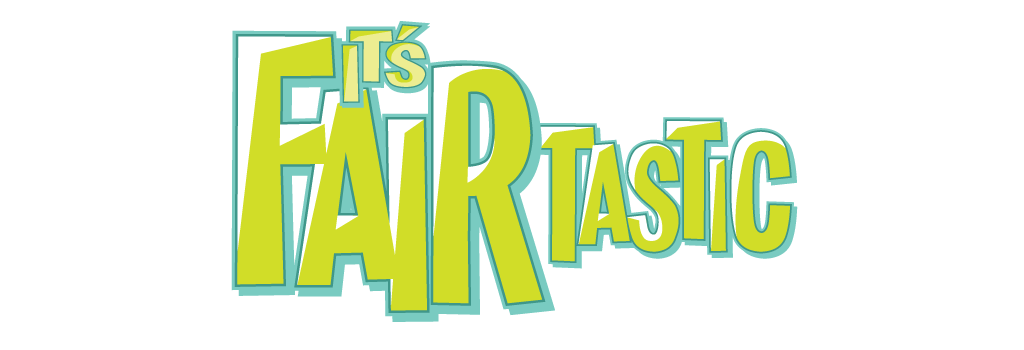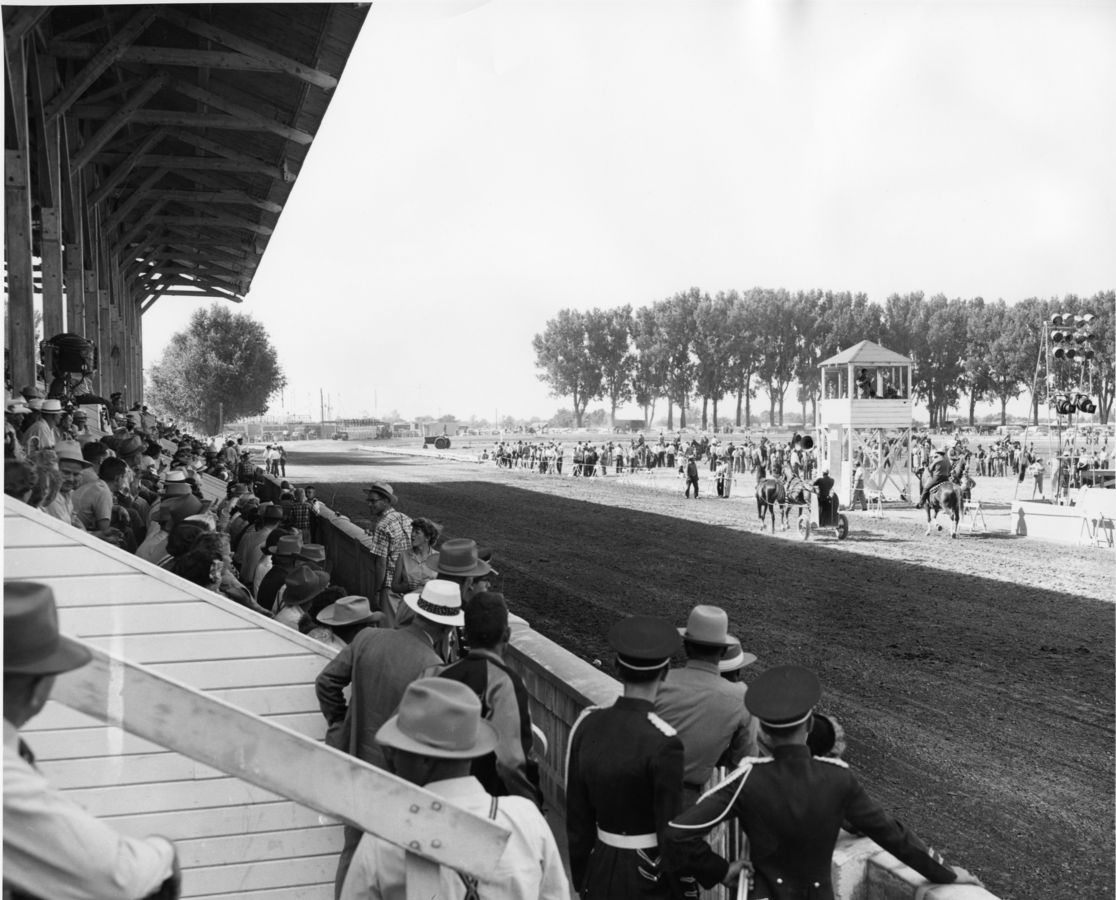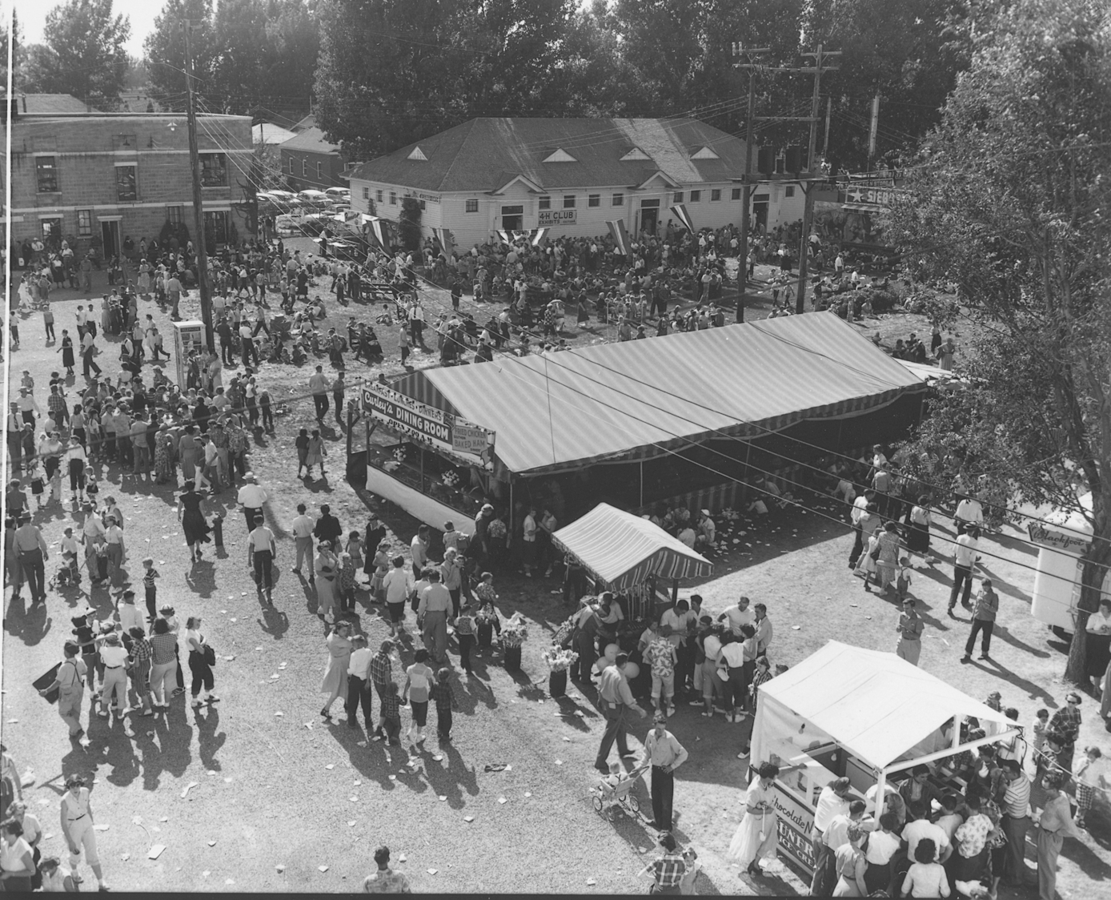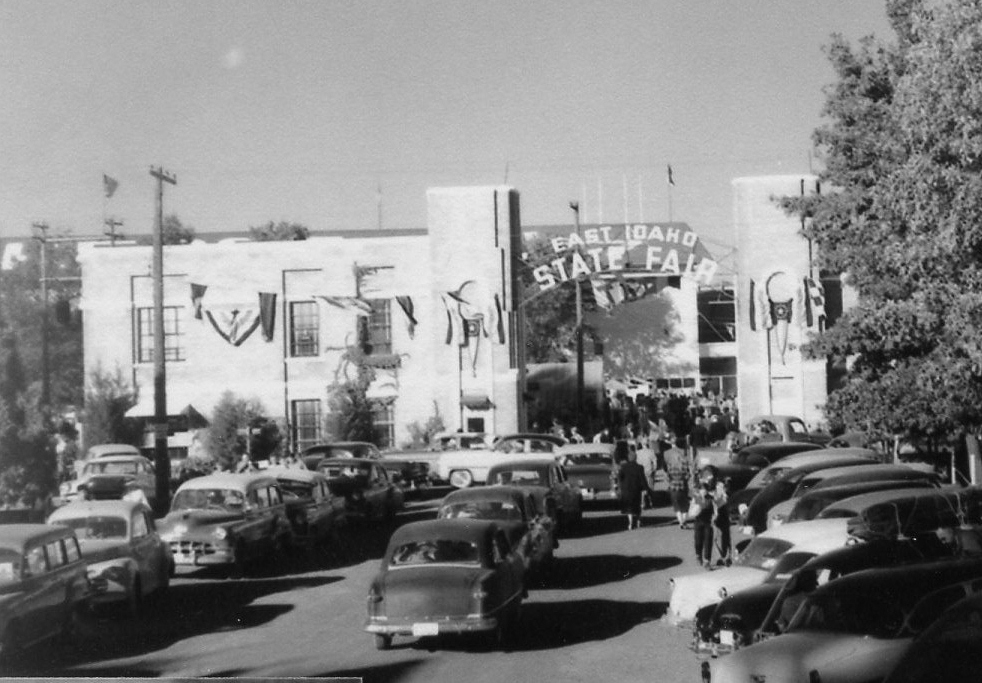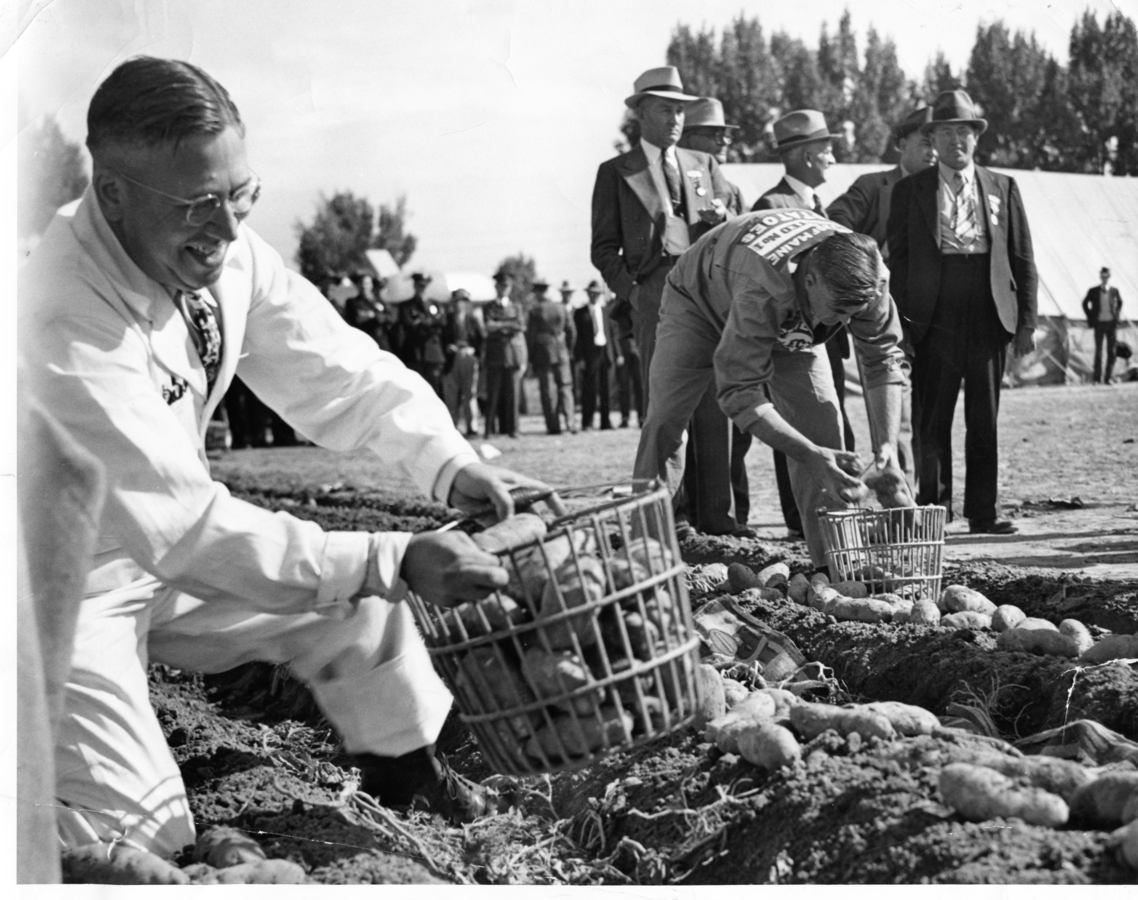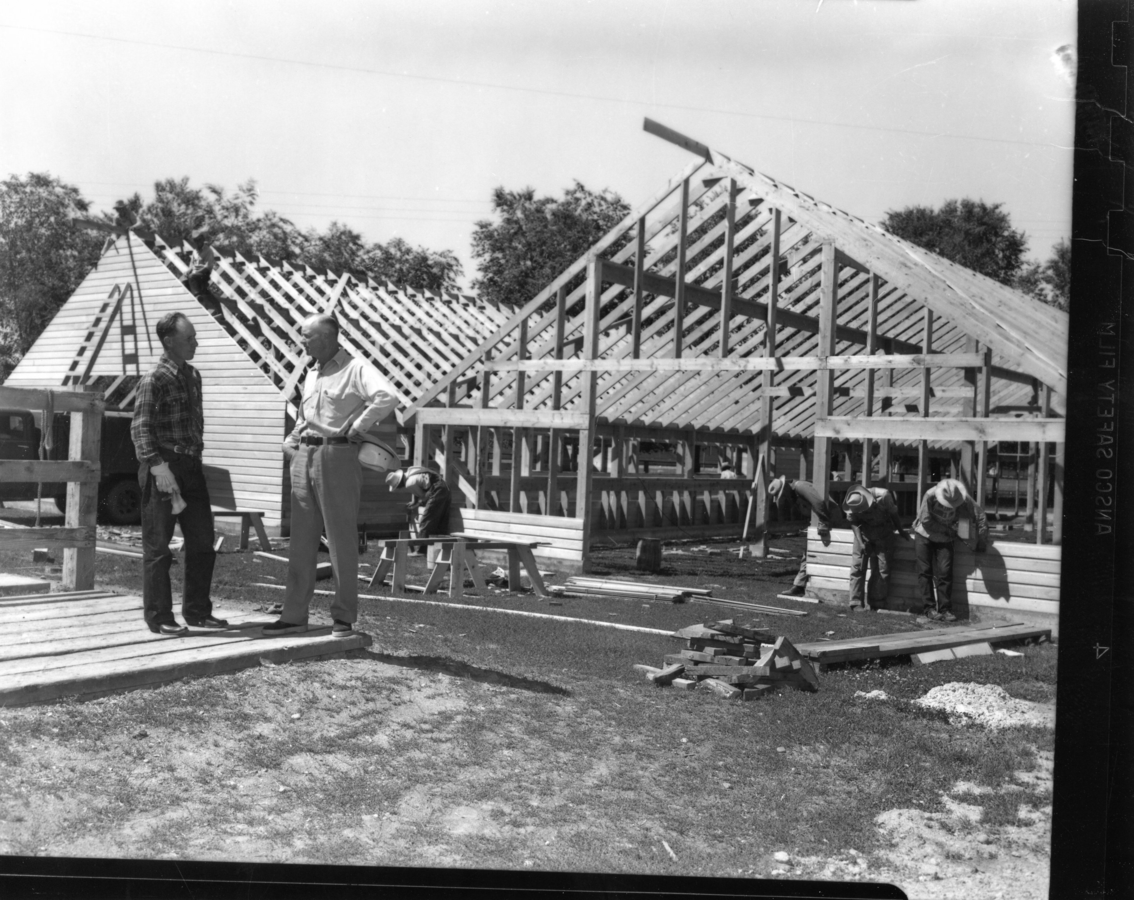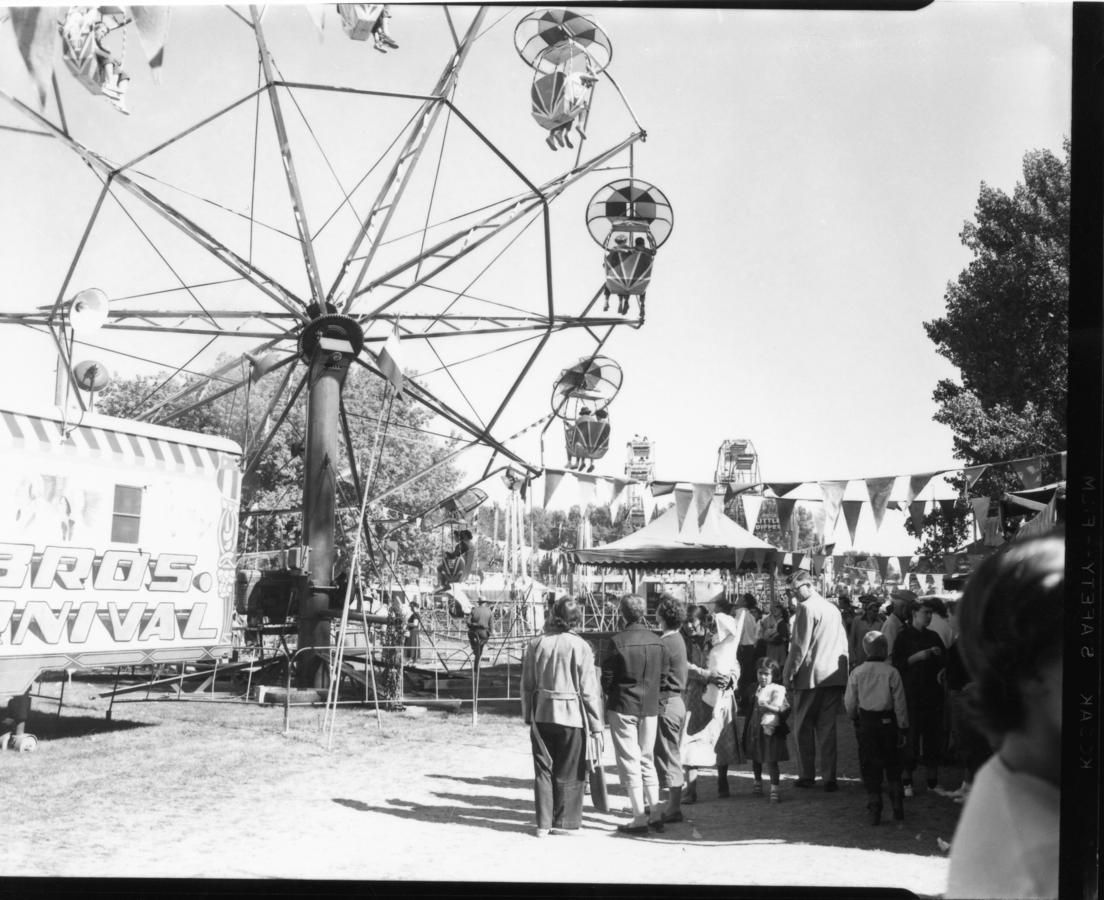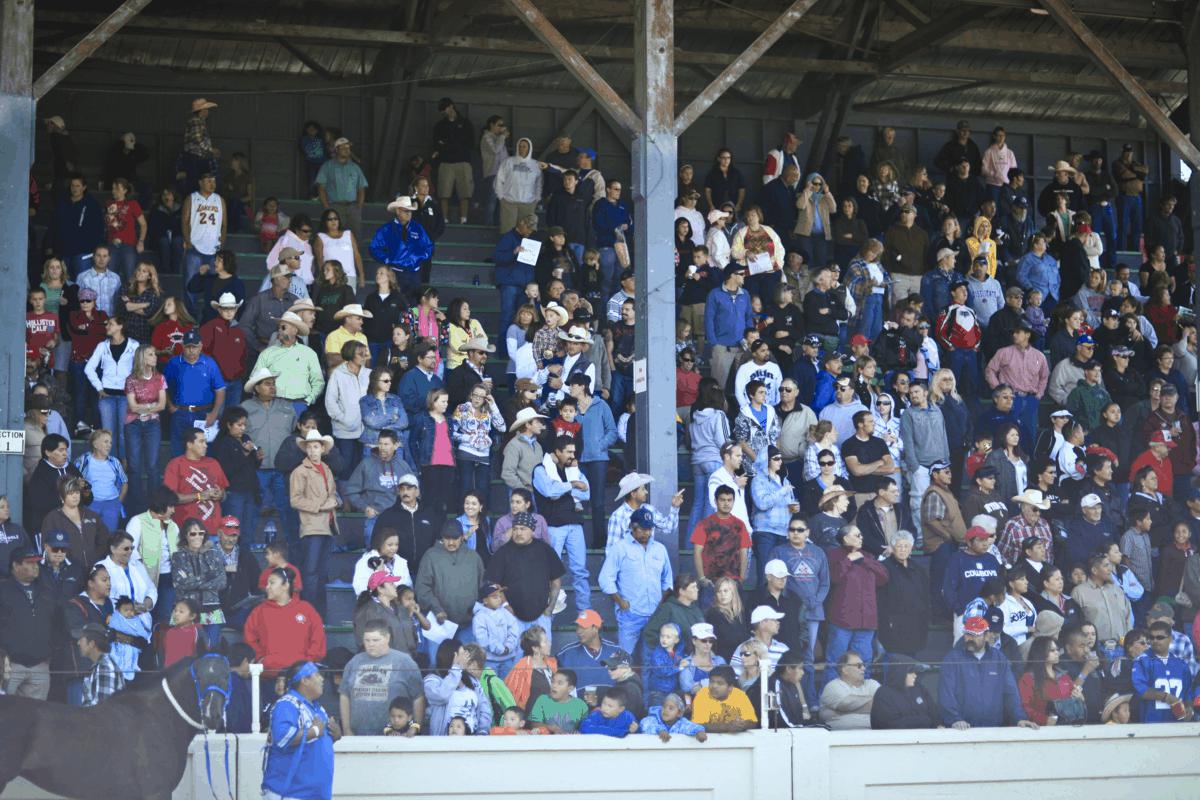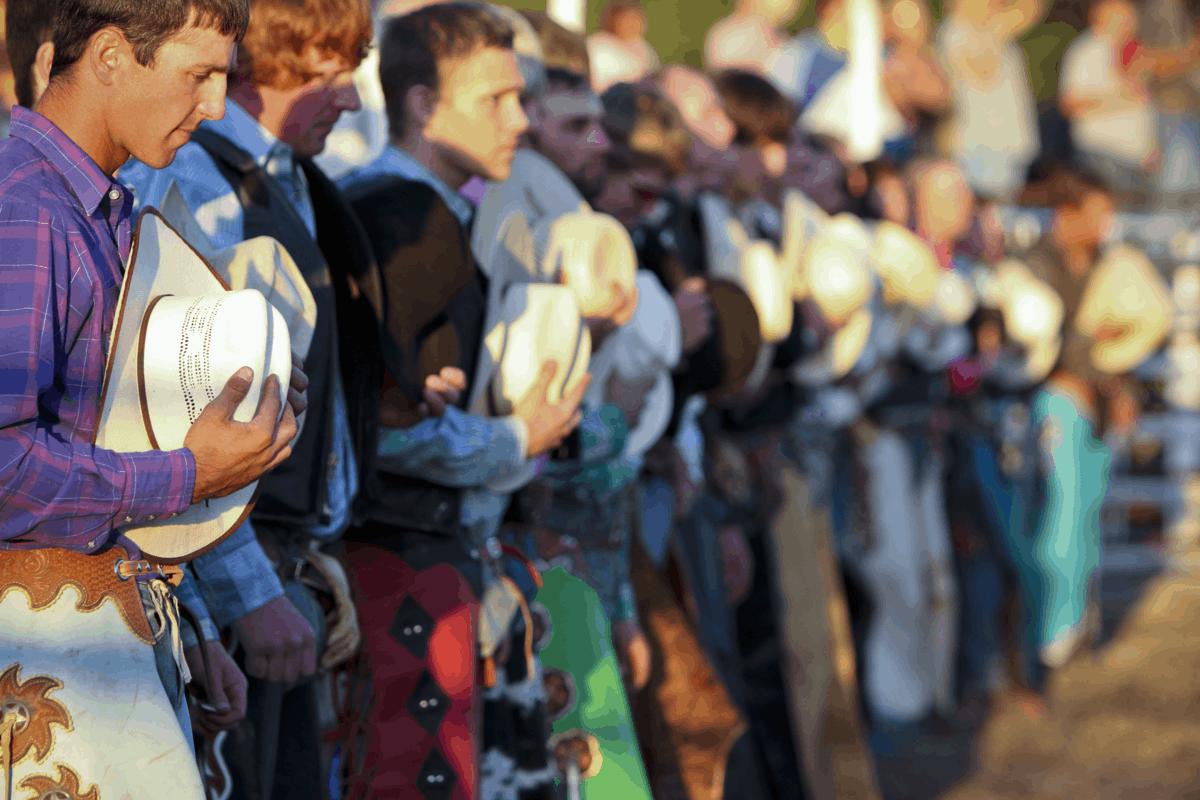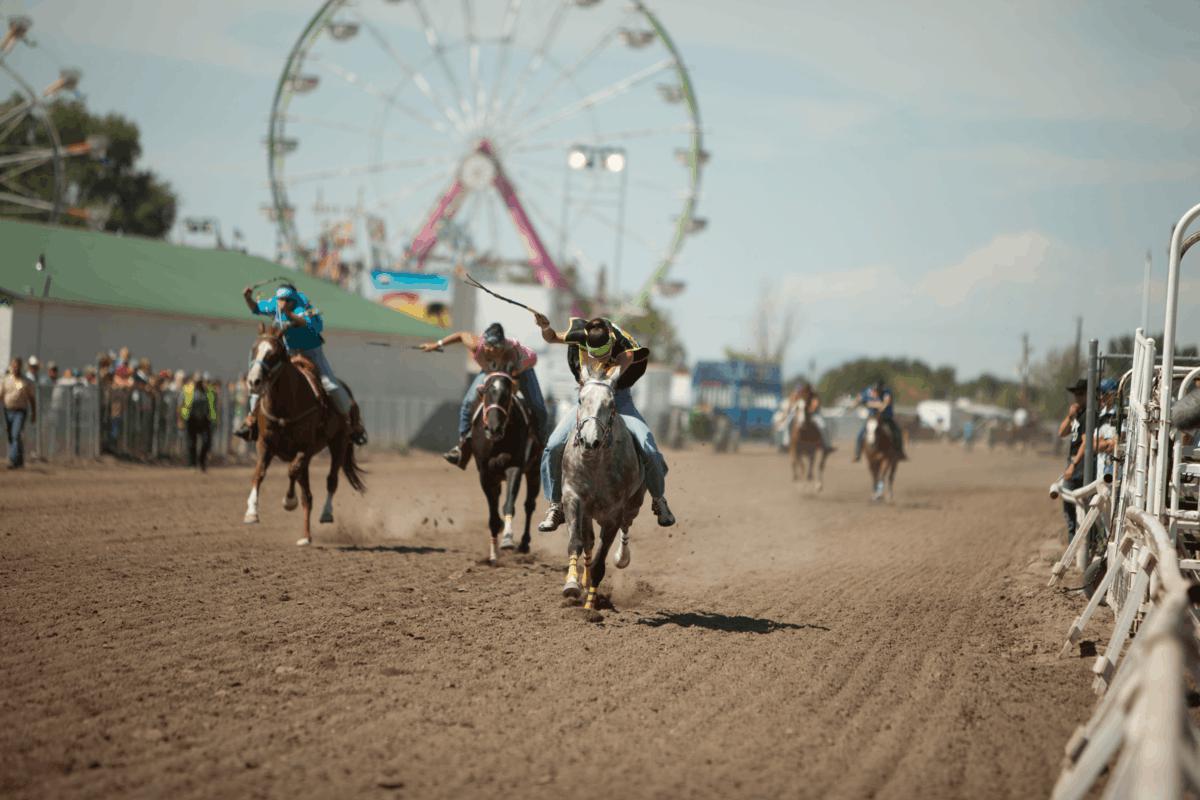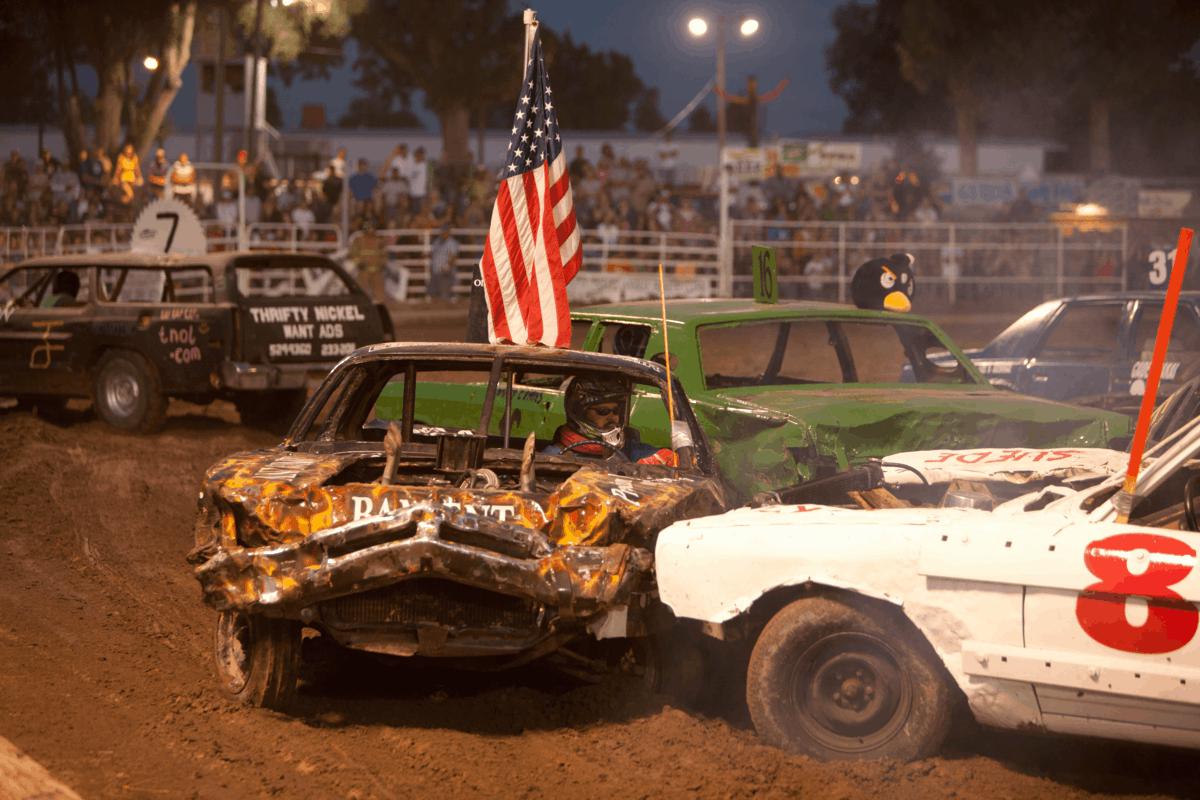Fair History
From its early origins as a livestock show in 1902, the Eastern Idaho State Fair has become a favorite annual destination for families young and old, creating fond memories and unforgettable experiences.
For more than a century, the Fair has upheld its mission to provide wholesome, affordable, family-oriented entertainment and education in an agricultural environment within clean and safe surroundings.
Agriculture has always been the backbone of the Eastern Idaho State Fair. Over the course of nine days, the Fair is home to more than 2,000 animals including beef cattle, draft horses, sheep, pigs, goats, rabbits, poultry, and pigeons. The Fair receives more than 6,000 entries from Idahoans young and old entering their hobbies and livestock in 26 competition categories. This includes Livestock, Flowers, Baking, Canning, Needlecraft, Antiques, Fine Arts, Hobbies & Craft, Photography, Native American, FFA, and 4-H.
Nearly 70 food vendors feed hungry visitors with favorites such as corn dogs, giant turkey legs, funnel cakes and tiger ears. More than 200 vendors showcase their services throughout the grounds. For the last several years, attendance has reached an all-time record of nearly 250,000 visitors.
The show’s success earned the name Southeastern Idaho Fair.
The Fair traces its history back to 1902, when a group of cattlemen wanted to hold a livestock show in Blackfoot. They got together to purchase some land, and the show was held. The Pocatello Tribune came to the show and reported on October 9, 1902: “This is a great day in the history of Blackfoot. There were cattle to look at as well as floral and agricultural exhibits.”
For the next 16 years, the Southeastern Idaho Fair ran continuously, where the first merry-go-round powered by a steam engine arrived in 1906, followed by the Fair Board of Directors spending $900 in 1912 to have Teddy Roosevelt arrive by train to make a campaign speech. In 1918, financial hardship forced the Fair to shut down for several years.
Fortunately, county leaders and the Farm Bureau saw the value of the fair and purchased the land, reopening the Fair in 1920. Five years later, the Fair became a four-day event. Also that year, the Idaho Legislature passed Multi County Fair District laws. Three counties in southeast Idaho – Bingham, Bonneville and Bannock – created the Eastern Idaho Fair District. In 1930, a fourth county – Clark – became part of the Fair district. With 16 counties today, Eastern Idaho State Fair is the only multi-county district fair in the State of Idaho!
Challenged the Utah Fair by changing its name to Eastern Idaho State Fair.
In the late 1930s, the Eastern Idaho Fair District overcame a big challenge when the Utah State Fair changed its dates to coincide with the Blackfoot event. The Fair Board refused to move its dates and challenged the Utah Fair for livestock and entertainment by changing its name to the Eastern Idaho State Fair. By this time, 12 counties were part of the Fair District, bringing an annual attendance of almost 40,000 visitors each year. A significant construction project was undertook and with the help of horses and a pully system the Grandstands arose. Around this same time the Arts & Crafts department was established, bringing more variety to the Home Art events that could be held during the Fair. Contests were created, including a Potato Picking Contest in 1939 where the Governors from Idaho and Maine competed. (Sadly the Governor of Maine won.)
In 1940, the Fair built its landmark arch, along with administrative offices with the help of the Core of Engineering, look for the plaque that still sits proudly, even after many layers of paint. That year the attendance of 66,000 plus 25,000 student admissions over six nights and five days broke all records of past years. Two years later, the United States entered World War II, leading the Fair to shut down operations in an effort to help the American war effort. Fair officials rented out their building to further assist the county through the storage of surplus food supplies and equipment. That same year tragedy struck the Fair when a fire destroyed the commercial building which contained a potato dehydration plant, consuming 250,000 pounds of potatoes, 50 tons of coal and all equipment inside. It took over ten years before the structure could be rebuilt.
The Eastern Idaho State Fair resumed operations in 1944 and less than one week after the completion of the 1944 Fair on September 22, 1944, the U.S. Army set up headquarters at the fairgrounds to guard and manage 500 Italian prisoners of war for over a month. In what was called the “acute harvest labor crisis in the country,” the Italian POW’s dug sugar beets and potatoes during their stay in Southeast Idaho. This event brought the reality of war and its effects directly to the people of this area.
The Board pulled the plug on betting.
After World War II ended in 1945, the Fair met new challenges. First-day attendance of 15,000 fairgoers, was up 50% from previous years, as new entertainment – including grandstand entertainment, aerial acrobats, a Disappearing Water Ballet and Pete Siebrand’s Carnival – drew crowds to the Fair. In 1948, attendance soared to over 82,000 during the five days, and housing in Blackfoot for Fair attendees became a serious problem. Several grounds improvements were made during this time, including a new Midway area on the west side, a new steel exhibit building, four new livestock barns and 50 new stalls for race horses. From 1946-1948, the Fair first offered betting on horse racing, but after two years, the Board pulled the plug on betting. For years, they fought to get horse racing legislation passed, despite vetoes from the Governor of Idaho. Eventually, it would pass.
The latter half of the 20th century continued to bring innovation and growth to the Eastern Idaho State Fair. The horse racing legislation finally passed, and pari-mutuel racing started in 1964. That same year, however, the new pari-mutuel racing commission and the Fair Board canceled the Indian Relay races, an event run by the Shoshone Bannock Tribal Council that has been popular and a mainstay since the Fair’s early years. This decision immediately spawned criticism from individuals who called the competition “the most popular part of the racing program.” The racing commission fine-tuned its schedule and the Indian Relay races returned in 1965; since then, the Indian Relays have run consistently during the horse races and continues to draw large crowds to the grandstand on the days the races are held.
In 1968, KIFI-TV chose the Eastern Idaho State Fair as the site for its very first LIVE broadcast, which featured weatherman Lloyd Lindsey Young.
Significant enhancements to the grounds.
The 1970s and 1980s ushered in significant enhancements to the grounds, including a new 4-H building, the $500,000 Goddard Livestock Pavilion and a new Hobbies & Crafts building. The Fair began operating under annual themes beginning with the 1972 theme, “Six Big Days and Nights, Spectacular Fun for Everyone!” In 1974, the Demolition Derby was introduced and became a Fair tradition benefiting the Blackfoot Elks Club who uses the money for youth programs through out Southeastern Idaho; since then it has become the Grand Finale Event. Fair attendance continued to rise; by the mid-1980s, the Fair was seeing 50,000 people on opening day, and totaling nearly 220,000. By 1989, the Fair had extended to an eight-day event.
In the 1990s, the Fair brought in Butler Amusements to began providing the Carnival; with over 30 rides and numerous game booths, they have maintained a solid relationship since with the Eastern Idaho State Fair. The Fair established a permanent stage for its nighttime entertainment, which during this time featured music legends Charlie Daniels and Travis Tritt.
The EISF continues to be Southeastern Idaho’s longest running annual event.
Now into the 21st Century, the Eastern Idaho State Fair continues to be Southeastern Idaho’s longest running annual event. In 2010, the Fair improved its online Grandstand Event Ticket ordering process, making it more convenient for fairgoers to buy their tickets ahead of time, saving them from waiting in lines to purchase or pick up will-call tickets. Also that year, the Fair Board strengthened the Fair’s smoking policy, whereby most of the Fair is now smoke-free, with the exception of two designated smoking areas. This creates a healthier environment for the Fair’s visitors, workers and animals who participate in this annual family tradition year after year. In 2017, the Fair theme “Bigger is Better” focused on yet another extension of this annual event and the Fair became a 9-day event starting on the Friday before Labor Day and running through the Saturday after Labor Day each year. In 2018, the Fair set an all-time attendance record of almost 249,000 visitors, and in 2019 remained in the same attendance bracket. The Fair also has used technology to better connect and communicate with its audiences, through its website – www.funatthefair.com – as well as through social media sites including Facebook, Instagram, Snapchat and Twitter.
2020 provides changes to the annual Eastern Idaho State Fair.
In 2020 the Eastern Idaho State Fair for the first time in 75 years was unable to provide the Fair that most people have come to enjoy and look forward to each year. Across the world life looked different and we saw that here in Southeastern Idaho. As our roots go back to the youth, animals, and country. We were able to provide a “2020 Modified Eastern Idaho State Fair”. We had 4-H Competitions on the grounds with the largest participation of youth and animals in over 10 years. We were also able to provide two nights of our “Gem State Classic Pro Rodeo” with limited attendance. In early 2020 our “Gem State Classic Pro Rodeo” was voted the “2019 Small Rodeo of the Year” and then again in 2020 our rodeo was nominated and came in the Top 5 in the Nation. And of course for our faithful Fair Food Lovers we had our “Fair Food Frenzy” for our “2020 Modified Eastern Idaho State Fair” with 15 of our favorites here to give us a small fix.
Looking Ahead to the Future of the Eastern Idaho State Fair.
The Eastern Idaho State Fair lends its success to the people of Eastern Idaho, who continue to visit the Fair year after year. Its dedicated Board of Director Members, County Commissioners from all 16 Counties, Fair Management and Fair Staff have dedicated countless hours through the years to bring this annual event to Blackfoot. Sponsors and area organizations have also lent generous support. There have been some hardships along the way, but supporters have seen the Fair’s meaning and value to the people of Idaho and have ensured the Fair’s continued presence.
The Eastern Idaho State Fair anticipates more success in the next 100 years!
